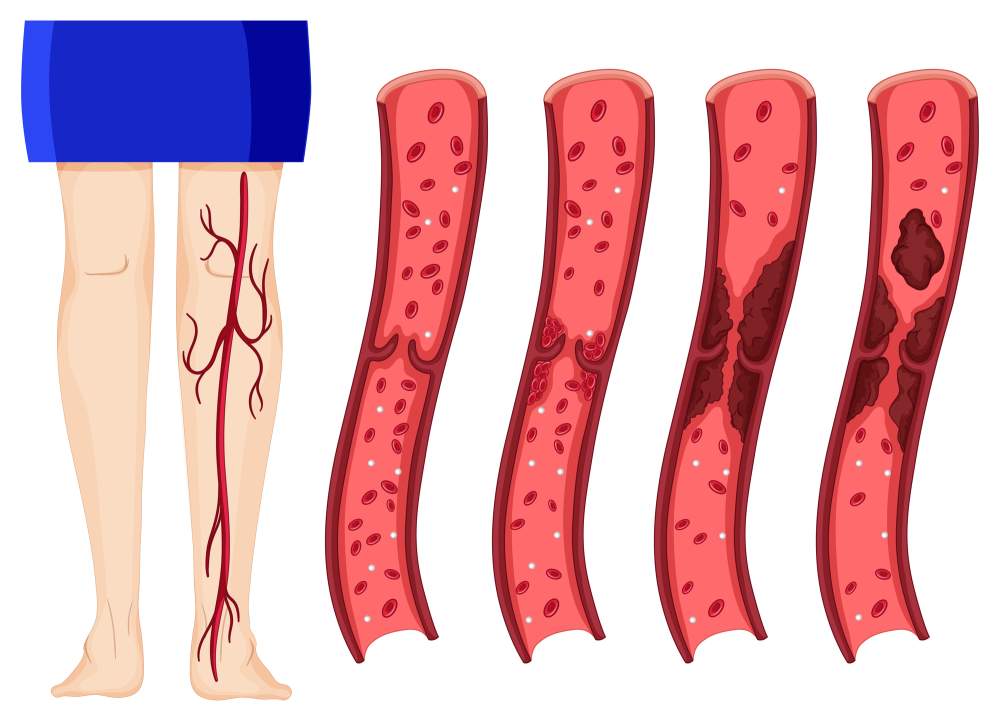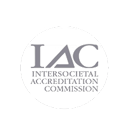Deep Vein Thrombosis – A medical condition that requires deep consideration
Friday, February 19, 2021

Among the more serious medical conditions a person can experience is anything that restricts or blocks blood from its natural and intended flow within the human body. Examples of this as related to arteries are peripheral artery disease (PAD) and critical limb ischemia (CLI), the more serious stage of PAD. However, there is also another serious condition called deep vein thrombosis (DVT) that affects the deep veins in the body, and can prove just as serious if it goes undetected and untreated.
Deep vein thrombosis (DVT) occurs when a blood clot forms in one or more of the deep veins in the body, usually in the legs. Patients who have developed a DVT may have a wide range of symptoms depending on how extensive the clot is. These can range from mild cramping of the calf to severe pain, swelling, tenderness and discoloration of the leg.
DVT can affect anyone, although some people have a higher risk than others. The main risk factors for developing DVT are immobility, trauma, recent surgery or hospitalization, travel, pregnancy, and hormonal or oral contraceptive therapy. Rare causes of DVT include anatomic factors such as iliac vein compression (May-Thurner Syndrome) and hypercoagulable blood disorders that make you more prone to clotting. As such, if your risk is higher than normal, you need to be especially diligent about paying attention to the warning signs. Recognizing a DVT early and seeking prompt treatment can prevent potential serious complications such as pulmonary embolism (PE), where the blood clot can travel from the legs to the lungs and can be a life-threatening condition. Symptoms of PE include chest pain, shortness of breath, lightheadedness and palpitations. The diagnosis of a DVT can be made by a simple ultrasound test in the office. As mentioned earlier, symptoms can be generalized and it is not always easy to recognize a DVT/PE. Here are five symptoms you should not ignore if you suspect a DVT/PE:
- Leg swelling
- Leg pain
- Chest pain/Shortness of breath
- Skin temperature changes
- Skin color changes
While there are many scenarios often cited as cause for DVT, the most common is prolonged sitting or lying down. When sitting for long periods of time, such as when driving or flying, your legs remain still for hours and your calf muscles don't contract. This can be detrimental to the body because muscle contraction normally helps blood circulate. Statistics show that sitting still for four or more hours slows down the blood flow in your legs. This makes your blood more likely to clot. And for the next few weeks, your blood clot risk stays higher than normal.
There are several measures one can take to reduce the risk of DVT particularly when taking a long road trip or plane ride. Stay well hydrated and drink plenty of water. Avoid sodas, coffee or alcohol as these tend to function as a diuretic and can be dehydrating. Also, take frequent breaks during the drive and make sure to get out and stretch or walk to keep the blood circulating. If you are in a plane, frequent ankle flexion and extension exercises will also aid the circulation. Compression stockings can also significantly reduce the risk of DVT and should be worn during travel.
Once a DVT has been diagnosed, treatment must be started immediately to prevent the clot from progressing and resulting in long term complications. Patients should be placed on blood thinners and monitored closely for side effects such as bleeding. Occasionally, if the clot is very extensive, a procedure may be necessary where a device is used to break up the clot and remove it from the vein. Patients who are not candidates for blood thinners, due to high risk of bleeding, may need to have a filter placed to protect them from a PE.
When diagnosed and treated promptly, most people with DVT will recover completely. However, up to 50 percent will develop post-thrombotic syndrome (PTS) as a result of damage to the vein caused by the clot. This can cause chronic pain, swelling, and discomfort that can permanently affect your quality of life, underscoring why it is essential to make the diagnosis early and treat immediately.









Thanks to his knowledge and guidance, I experienced significant improvement and, ultimately, complete healing. His approach was thorough, professional, and reassuring, which made the entire process much easier to handle. I truly appreciated how he took the time to explain every step and answer all my questions patiently. Dr. Ikpoko on Youtube didn’t just treat a medical condition; he restored my confidence and quality of life. I feel healthier, happier, and more empowered today because of his dedication. I wholeheartedly recommend Dr. Ikpoko to anyone seeking expert help for oral herpes or similar conditions. Website: https://drikpoko.wixsite.com/herbs Or email: Drikpoko@gmail.com Thank you so much, Dr. Ikpoko, for your outstanding care and for giving me a fresh start! Thursday, November 27, 2025